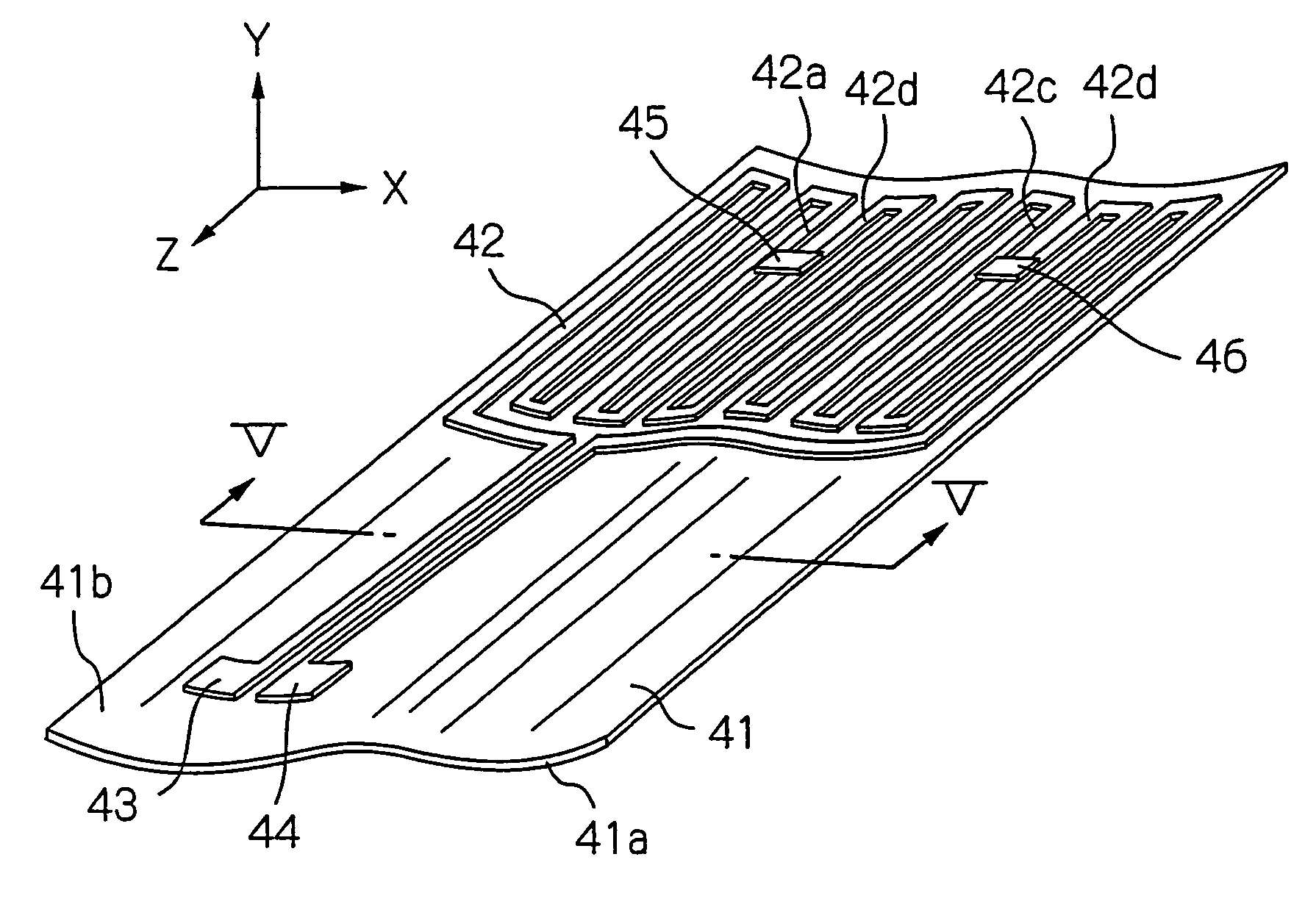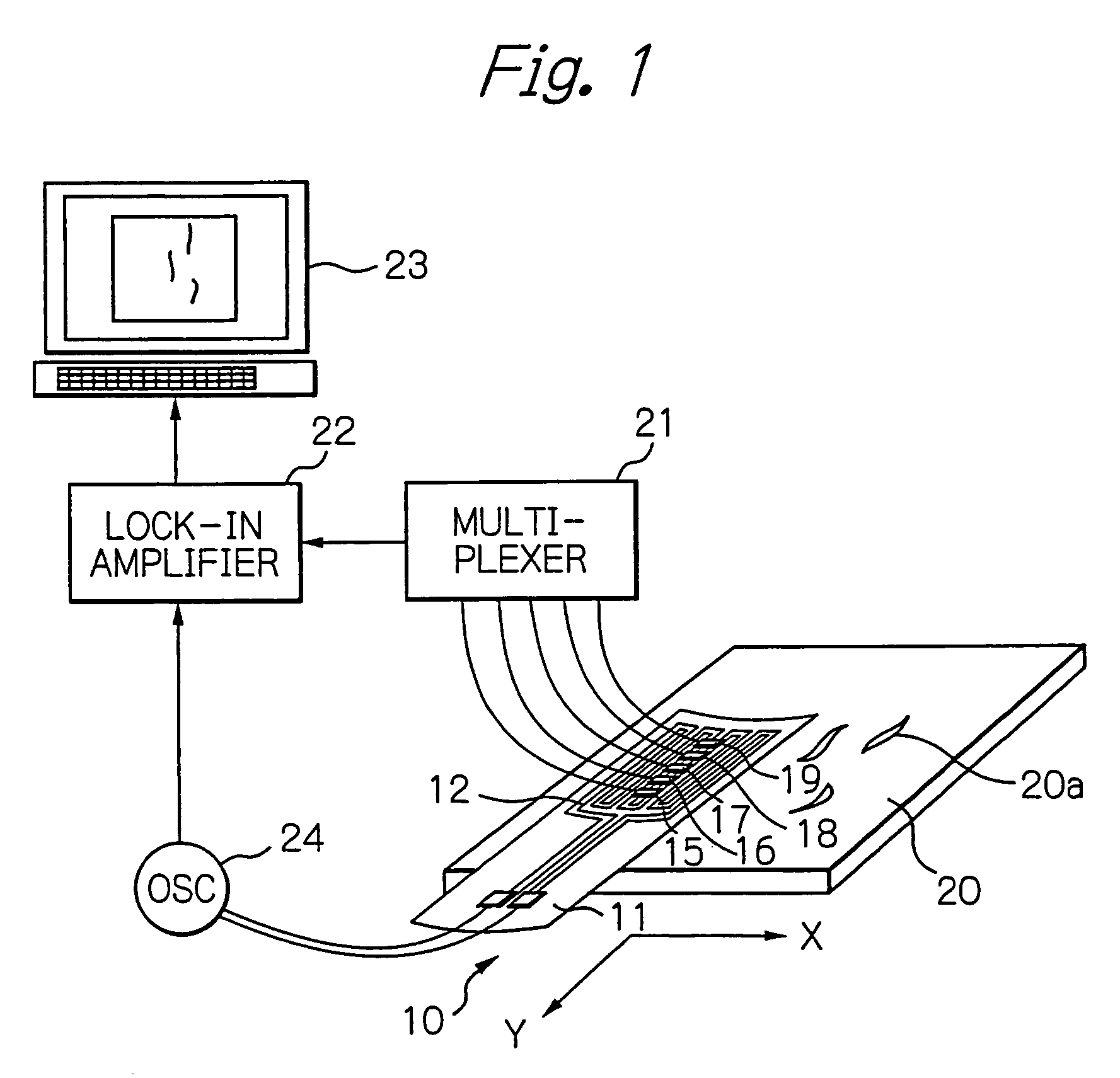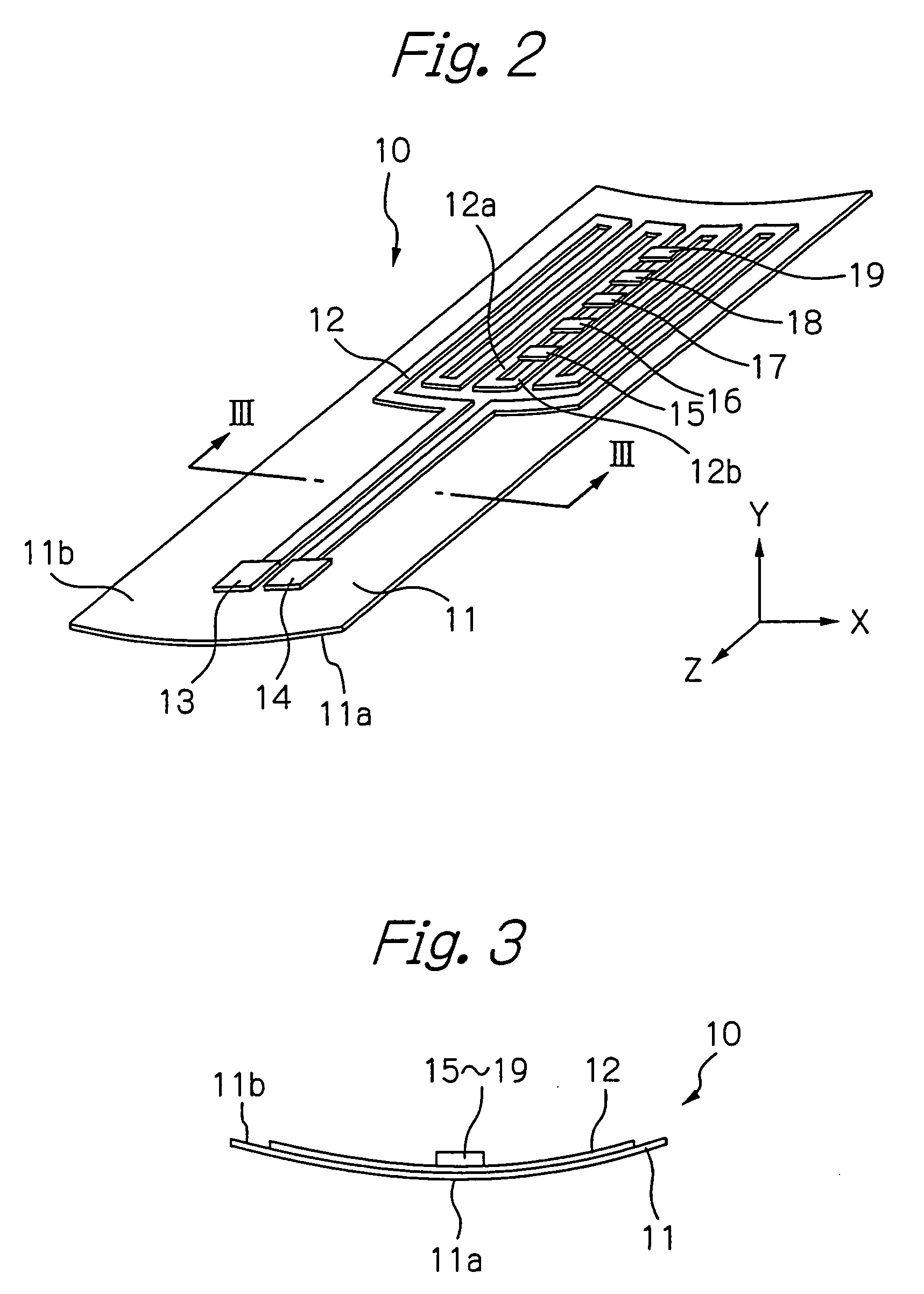Eddy-current probe
- Summary
- Abstract
- Description
- Claims
- Application Information
AI Technical Summary
Benefits of technology
Problems solved by technology
Method used
Image
Examples
Embodiment Construction
[0066]FIG. 1 shows a diagram schematically illustrating a configuration of an testing system using the eddy-current according to a preferred embodiment of the present invention,
[0067]FIG. 2 shows a perspective view schematically illustrating a configuration of the ECT probe according to the embodiment in FIG. 1, and FIG. 3 shows a cross-sectional view taken along with line III—III in FIG. 2.
[0068]In these figures, reference numeral 10 indicates an ECT probe, 1 indicates its flexible substrate formed of an insulative material such as polyimide, 12 indicates a meander-type exciting coil including coil conductors formed as a planar pattern turned back on the opposite surface 11b to the measurement surface 11a of the substrate 1, 13 and 14 indicate a pair of electrode terminals formed on the substrate 1, which is connected electrically to both ends of the exciting coil 12, 15 to 19 indicate thin-film chips bonded on the exciting coil 12, each of which is mounted with a GMR element (eddy...
PUM
 Login to View More
Login to View More Abstract
Description
Claims
Application Information
 Login to View More
Login to View More - R&D
- Intellectual Property
- Life Sciences
- Materials
- Tech Scout
- Unparalleled Data Quality
- Higher Quality Content
- 60% Fewer Hallucinations
Browse by: Latest US Patents, China's latest patents, Technical Efficacy Thesaurus, Application Domain, Technology Topic, Popular Technical Reports.
© 2025 PatSnap. All rights reserved.Legal|Privacy policy|Modern Slavery Act Transparency Statement|Sitemap|About US| Contact US: help@patsnap.com



